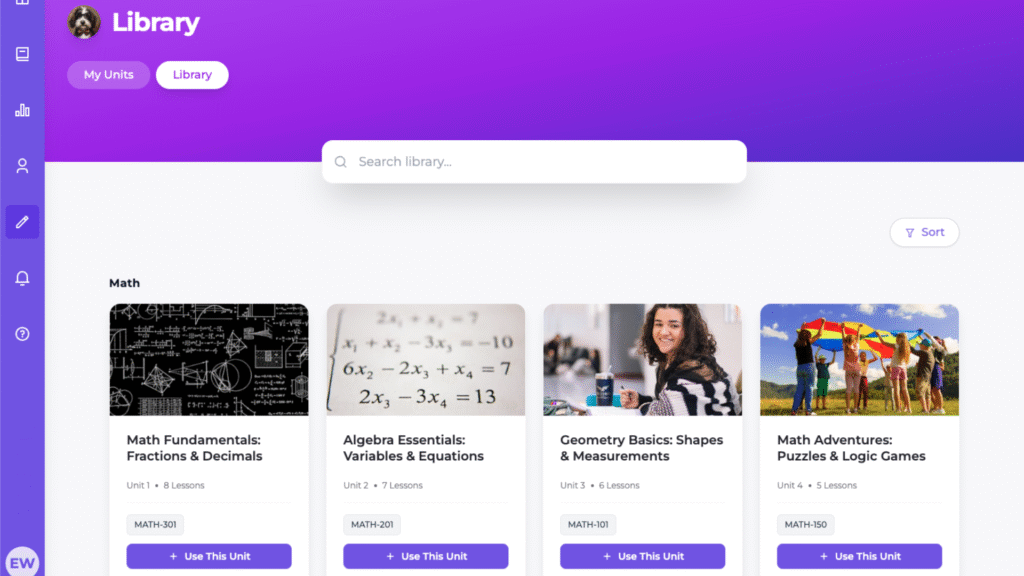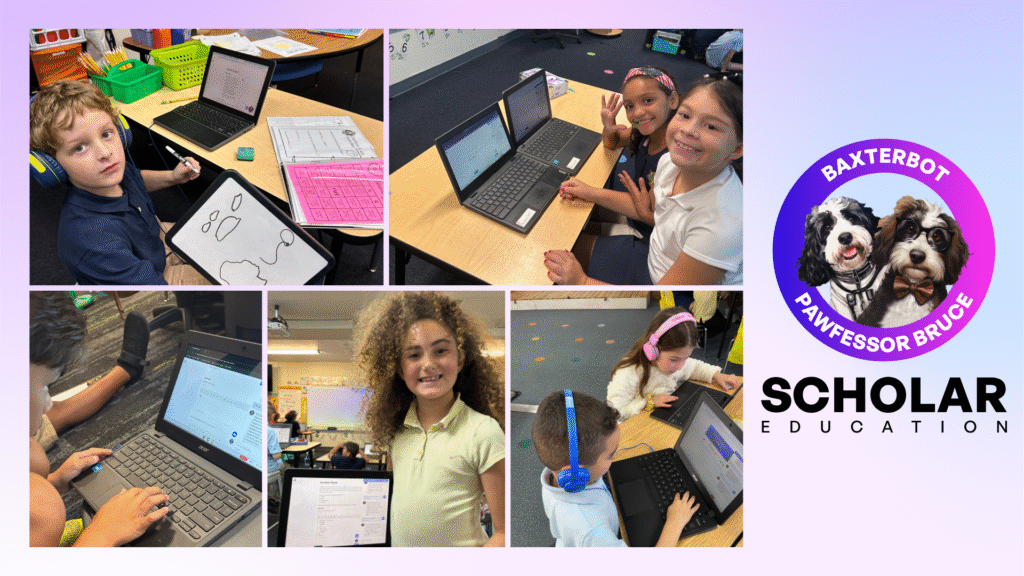Let’s be real. Elementary teachers wear all the hats. From morning meetings to math stations, behavior charts to birthday cupcakes, your plate is full. So when someone mentions AI in the classroom, your first thought might be, “Cool… but who has time for that?”
That’s where Scholar Education comes in. Designed with real classrooms in mind, Scholar makes it easy for elementary teachers to bring AI into their day without adding extra work. In fact, it does the opposite: it lightens your load.
Here are 5 easy ways you can start using Scholar in your classroom tomorrow.
1. BaxterBot = Your New Student Assistant
Scholar’s AI-powered BaxterBot gives students real-time support when they need it most. Whether they’re confused about directions, stuck on a reading passage, or unsure of what to do next, BaxterBot guides them forward—without interrupting your lesson.
It’s multilingual, reading-level aware, and always encouraging. Your students become more independent, and you can stay focused on small group instruction.

✅ Try it: Encourage students to ask BaxterBot for help before raising their hand during stations or independent work. Need more ideas on using BaxterBot? Watch our webinar!
2. Supports for Every Learner—Built In
Scholar makes implementing accommodations seamless. Within the accommodations toolbox, each student receives their IEP or 504 accommodations automatically. From extended time to movement breaks to simplified instructions, accommodations are embedded directly into student activities—no extra prep for you.
The best part? You’ll get real-time data on how often supports are used, so you’re never guessing what’s working.

✅ Try it: Have students with IEPs and 504 plans take a look at their accommodations toolbox within Scholar! Not only does it teach independence, it allows students to build self-advocacy as they see which accommodations they have access to. Here’s our webinar where we share more about personalizing the accommodations toolbox for students!
3. Personalized Student Feedback
When students submit responses in Scholar, they get timely feedback from the teacher with the help of PAWfessor Bruce that’s both specific and encouraging. Whether it’s a math solution, a written response, or a comprehension question, Scholar gives tips to improve—and builds confidence while doing it.

✅ Try it: Use Scholar as a quick formative assessment then use PAWfessor Bruce to help generate feedback for each student. Want to watch this in action? Here’s our webinar about generating feedback!
4. Actionable Teacher Dashboards
Scholar gives you the data you actually need. You can see which students used accommodations, how much support they received, who needs more practice, and which skills are mastered—all in a clean, real-time dashboard.
No more digging through spreadsheets or guessing who needs what. You’ll have clear insights to plan groups and next steps.

✅ Try it: Check your Scholar teaching dashboard to help plan differentiated groups for the next week. Watch our webinar where we highlight more data insights!
5. Ready-to-Use (and Easy-to-Customize) Activities
Scholar includes a library of standards-aligned activities in a variety of content areas. Want to personalize it? Adjust the reading level, swap a prompt, or add visual supports—all in seconds. It’s ideal for centers, bell ringers, or homework.

✅ Try it: Create a “Friday Choice Board” with 3 Scholar activities and let students pick based on interest or skill level. Want to learn more about the Scholar Library? Watch our webinar here!
🎉 You’re Already Doing the Hard Work—Let Scholar Help
You don’t need to be a tech expert to use AI in your classroom. With Scholar, it’s simple, supportive, and student-centered. Book a quick demo or reach out to our team. We’ll show you how to get started in minutes—and how Scholar can start making a difference tomorrow.

